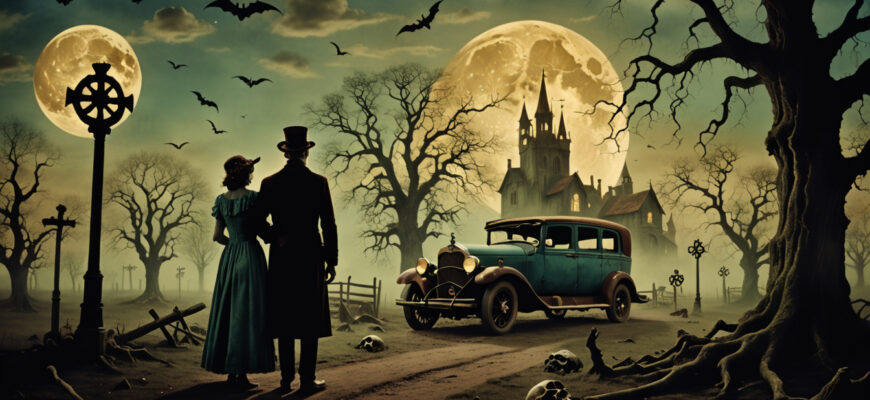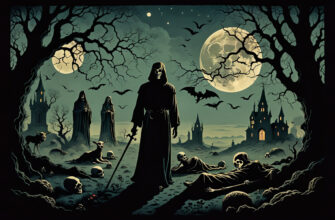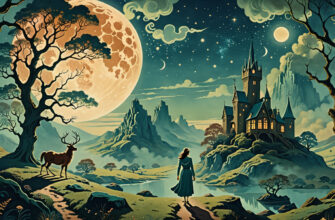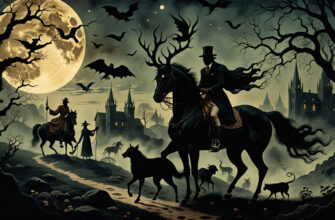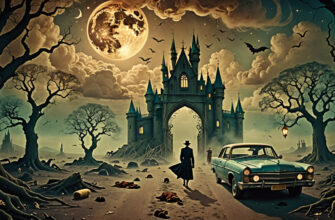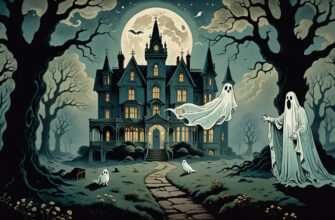Dreams about old, deceased loved ones can ripple through the mind like echoes from another time, stirring up a mix of emotions that may feel both familiar and mysterious. When someone from the past—someone no longer present in the waking world—appears in a dream, it often carries a weight beyond nostalgia. These encounters are rarely just memories replaying; instead, they summon feelings, questions, and unresolved conversations that linger beneath the surface of daily life. Whether it’s a grandparent, an old friend, or even a stranger whose face you can’t quite place, these dreams invite a journey inward, asking what stories or emotions are still in need of attention.
From grief that hasn’t quite settled, to the longing for connection with parts of our history and ourselves, dreaming of the dead taps into a profound emotional and spiritual landscape. It’s as if the dream space becomes a gallery where memories and shadows mingle—sometimes comforting, sometimes unsettling. These encounters can be seen as psychological echoes, triggered by unresolved feelings or past wounds. But they can also act like spiritual invitations, calling us to heal, integrate, or awaken dormant pieces of our inner world.
- What These Dreams Mean on a Personal Level
- The Spiritual Charge Behind These Dreams
- Common Dream Figures: Beloved Ancestors, Strangers, and Lineage Symbols
- Messages About Unfinished Business and Emotional Wounds
- Inherited Patterns and Ancestral Threads in Dream Symbolism
- Transformative Life Passages and Integration
What These Dreams Mean on a Personal Level
There’s a raw emotional charge tied to dreaming about the old dead. They bring memories and grief wrapped in complex layers: memories that bring comfort or pain, grief that has settled or lingers, and feelings left unfinished. Often, these dreams are a subconscious way of processing loss without the clarity or closure that waking life might have denied. The dream allows a safe space for a conversation that never happened, or a moment to express what was left unsaid.
For example, dreaming of a grandparent might surface not just who they were, but what they symbolized—a sense of safety, wisdom, or even trauma passed down that your waking mind might overlook. These appearances can feel like a gentle tug toward reconciling your past and the parts of yourself shaped by these relationships.
It helps to think of these dreams in two overlapping ways:
- Psychological echoes: Emotions, regrets, or shadows replaying themselves, helping the mind make sense of grief or loss.
- Spiritual invitations: The dead appearing as guides or messengers, offering wisdom or healing beyond the literal fact of death.
Identifying which is at play in the dream can shift its meaning from being simply about mourning toward a deliberate invitation for growth and self-reflection.
The Spiritual Charge Behind These Dreams
Meeting ancestors or departed souls in dreams isn’t merely about reliving memories. These encounters open doorways to inner wisdom. Across many cultures, elders and ancestors in the dream world serve as guardians of knowing that transcends time, linking the dreamer to lineage and ancestral lessons. This spiritual charge moves beyond sadness or loss and connects to a deeper source of healing.
When the dead visit in a dream, they might be offering insight into challenges faced by the dreamer, healing old wounds through symbolic encounters rather than straightforward narratives of mourning. The energy in these dreams often feels different—a quiet gravity or a peaceful presence that suggests something fertile is happening beneath the surface.
Sometimes, the dead appear in dreams to remind the living of cycles of life and transformation, or to provide reassurance during a transition. They might ask you to acknowledge your resilience or recognize patterns inherited across generations that are ready to evolve.
Common Dream Figures: Beloved Ancestors, Strangers, and Lineage Symbols
The faces of the dead that come into dreams can carry very different messages depending on whether they are familiar or unknown. Beloved ancestors often embody personal or familial values, strengths, or unresolved stories that your soul is grappling with. They might embody wisdom, protection, or sometimes the weight of inherited trauma that needs tending.
| Dream Figure | Typical Message | Emotional Tone |
|---|---|---|
| Beloved Ancestors | Connection to roots, inherited wisdom, healing unfinished lineage wounds | Warm, guiding, sometimes somber |
| Unknown Dead or Strangers | Unrecognized parts of self, collective trauma, fears about mortality | Mysterious, unsettling, often challenging |
| Symbolic Lineage Figures | Representations of family patterns, cultural stories, karmic ties | Symbolic, reflective, sometimes empowering |
Recognizing signs from your ancestral line can require tuning into feelings, cultural symbols, or repeated motifs in dreams. For example, a dream of an old family home or heirloom could be inviting you to embrace or release inherited patterns.
Dreams featuring strangers or unknown figures who represent “old dead” may feel more cryptic but carry deep personal significance nonetheless. They can point toward shadow aspects or collective histories that shape how you live today without clear conscious awareness.
Messages About Unfinished Business and Emotional Wounds
Ever wake up from a dream about someone who died years ago and wonder what your mind is trying to say? These visions often spotlight the unresolved emotions lurking beneath the surface—grief you haven’t fully faced, conversations left hanging, or feelings packed away like unopened letters. When a deceased loved one appears, it’s rarely a random visit. Instead, it’s your subconscious pointing to places still aching in your heart.
Think of these dreams as invitations rather than hauntings. They ask, gently but insistently: What conversations didn’t happen? What apologies were never made? What emotions did you shove aside to keep going? There’s an ongoing cinematic reel of memories, regrets, and longing that your psyche is trying to process while you sleep.
Grief is a shape-shifting companion in transformation. It’s not only about mourning loss but about recognizing how loss changes the terrain inside you. Embracing grief in dreams can feel uncomfortable, like sitting with a heavy weight you’d rather set down. But this weight isn’t meant to immobilize. It’s part of the process of moving through emotional storms toward a new chapter of your inner life.
For example, someone who lost a parent decades ago might dream of a heartfelt goodbye that never took place. In waking life, that conversation is impossible, but the dream creates a sacred space to speak what was left unsaid. These encounters can offer a kind of emotional rescue—a way to hold and transform buried wounds.
Facing grief this way isn’t about “getting over” something quickly or suppressing pain with false positivity. It’s about witnessing your feelings with tenderness and letting the dream serve as a mirror to what’s still unsettled, asking for acknowledgement. When allowed that space, grief becomes less of a ghost and more a teacher pointing toward healing.
Inherited Patterns and Ancestral Threads in Dream Symbolism
Dreams about the dead often carry echoes not only of personal history but of ancestral legacies woven deep into your psyche. These visits can unlock patterns passed down through generations—beliefs, fears, behaviors that once helped ancestors survive but now keep you stuck.
Maybe your dream features a stern ancestor whose rigid ways shrouded vulnerability, hinting at how you might be carrying a similar armor today. Or perhaps you see someone you never met but recognize the exact weight of expectations or trauma reverberating through family lines. These symbolic encounters are a prompt to explore inherited stories with both curiosity and self-compassion.
Reflecting on family histories in this way can flip the script from burden to invitation. Instead of being defined by what came before, there’s room to question which narratives serve you and which have outlived their usefulness. For instance, if anxiety or perfectionism runs in your family, a dream may spotlight this thread, nudging you to unpick it consciously.
Approaching inherited wounds with kindness doesn’t mean minimizing their impact. Rather, it opens a space to see those who came before as complex beings wrestling with their own survival. Like the dream of a grandmother sitting calmly in a garden, it can embody resilience while reminding you that you’re not alone in these threads.
This gentle reflection can inspire small, powerful shifts. Over time, dreams act like ancestral counsel—their quiet nudges helping to release what no longer fits while honoring where you come from. It’s a way to reclaim your capacity for choice and rewrite inherited stories, transforming patterns into sources of strength.
Transformative Life Passages and Integration
Dreams about old dead people also arrive as signposts marking thresholds between who you were and who you’re becoming. They often emerge during major shifts—moments of inner reorientation where parts of your identity need attention, recognition, or weaving back into the whole self.
Each dream invites the question: Which fragments of your past are trying to be seen and held now? These parts might be hidden memories, emotions tucked away after trauma, or qualities once alive but forgotten. When these aspects finally surface in dreams, it signals that transformation is not just happening on the surface but asks for integration at a deeper level.
Picture a dream where a deceased mentor appears, offering silent encouragement or handing over a symbolic object. Such moments can highlight the qualities you need to bring forward—courage, wisdom, or gentleness—to navigate your current path. Or maybe a once-ignored wound resurfaces, reminding you that healing requires meeting the shadow as much as embracing the light.
Holding these pieces with awareness allows for more coherent selfhood. Instead of parts of you being scattered or denied, they find a place in your ongoing story. This integration lightens your internal landscape, making space for growth that honors all you’ve been through.
Ultimately, these dreams act as cosmic weather reports—not predicting outcomes but offering direction in the tangled clouds of change. When you listen, they whisper: You were born for this journey, and every past piece holds a key to your unfolding.
